Onyx
Onyx is a type of chalcedony, which is a microcrystalline form of quartz. It is a banded variety of chalcedony that forms in concentric layers of different colors. Onyx typically has a black base with white or colored bands. The colored bands can range from shades of brown, red, orange, yellow, green, blue, and purple.
Onyx is found in various parts of the world, including Brazil, India, Madagascar, Mexico, Pakistan, and the United States. It has been used for thousands of years for decorative purposes, as well as for jewelry and other ornamental objects.
In ancient times, onyx was believed to have protective properties and was often used in talismans and amulets. It was also used in the creation of cameos and intaglios, which are engraved designs that are cut into the surface of the stone.
Today, onyx is still used for jewelry and decorative objects, and is valued for its unique beauty and distinctive banding. It is also used as a building material for floors, walls, and countertops, and is often used in high-end residential and commercial properties.

Contents
- Physical characteristics of Onyx
- Chemical composition
- Formation and occurrence of Onyx
- Types of Onyx
- Uses of Onyx
- Mining and processing
- Comparing Onyx mineral with other minerals
- Economic value
- Cultural significance of Onyx
- Interesting facts about Onyx
- Summary of key points
- Distribution of Onyx
- FAQ
- References
Physical characteristics of Onyx
Onyx has several physical characteristics that make it a distinctive and valuable mineral:
- Hardness: Onyx has a hardness of 6.5 to 7 on the Mohs scale, which means it is a relatively hard mineral that can be polished to a high shine.
- Color and banding: Onyx is typically black with white or colored banding that runs parallel to the layers of the mineral. The colors of the bands can vary widely and can include shades of brown, red, orange, yellow, green, blue, and purple.
- Transparency: Onyx is generally translucent to opaque, which means that it allows some light to pass through, but not enough to see through the mineral.
- Lustre: Onyx has a waxy lustre that can be polished to a high shine, making it a popular choice for decorative objects and jewelry.
- Density: Onyx has a density of 2.6 to 2.7 g/cm³, which is slightly lower than the density of pure quartz.
- Fracture: Onyx has a conchoidal fracture, which means that it breaks into smooth, curved surfaces that resemble the inside of a seashell.
Overall, the physical characteristics of onyx make it a beautiful and distinctive mineral that is valued for its unique banding and its ability to be polished to a high shine.
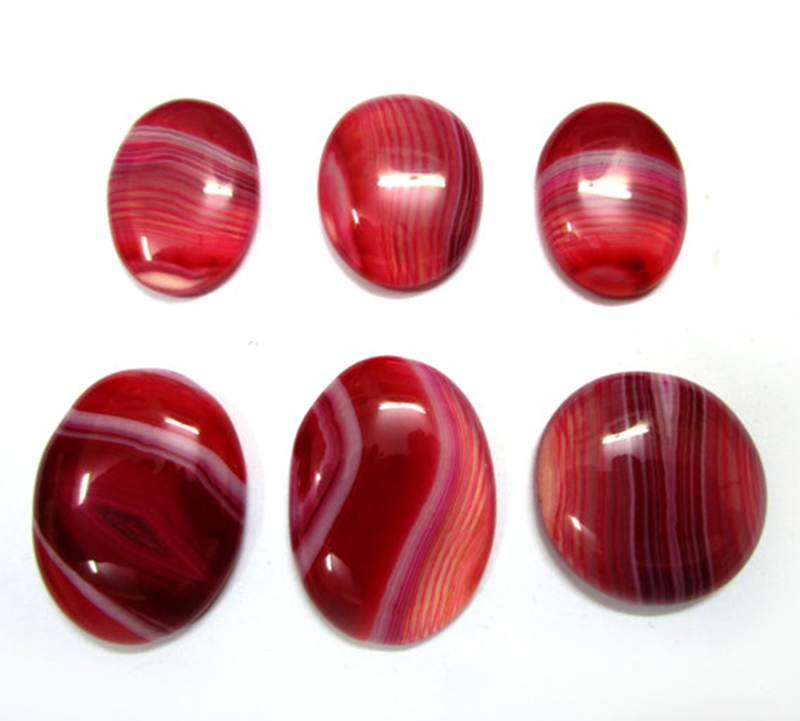
Red onyx (also called “Sardonyx”)
Chemical composition
Onyx is a type of chalcedony, which is a mineral that has a chemical composition of SiO2 (silicon dioxide). Like other varieties of chalcedony, onyx is composed of tiny crystals of quartz that have formed together into a compact mass. However, onyx is distinguished from other types of chalcedony by its distinctive banding pattern.
Onyx can also contain small amounts of impurities, which can give it different colors and banding patterns. For example, onyx that is brown or red may contain iron oxide impurities, while onyx that is green may contain chromium or nickel impurities.
Overall, the chemical composition of onyx is relatively simple, consisting mainly of silicon and oxygen atoms arranged in a crystalline structure. However, its unique banding patterns and colors make it a highly prized mineral for decorative and ornamental uses.

Formation and occurrence of Onyx
Onyx forms as a result of the deposition of silica-rich solutions in cavities within rocks. Over time, these solutions slowly evaporate, causing the silica to crystallize and form layers of chalcedony. The banding pattern in onyx is thought to result from changes in the concentration or composition of the silica-rich solutions during the deposition process.
Onyx is commonly found in association with other minerals, such as calcite, aragonite, and travertine, which are often found in caves and other underground formations. It can also form as a result of the replacement of other minerals, such as limestone or dolomite, by silica-rich solutions.
Onyx is found in many parts of the world, including Brazil, India, Madagascar, Mexico, Pakistan, and the United States. In the United States, onyx is found in California, Arizona, and Utah, among other places. It is often mined from underground deposits, although it can also be found on the surface in some locations. Once mined, onyx is usually cut and polished into decorative objects or used for jewelry and other ornamental purposes.

Types of Onyx
There are several different types of onyx, which are distinguished by their color and banding patterns. Some of the most common types of onyx include:
- Black Onyx: This is the most common type of onyx and is characterized by its black base color and white or light-colored banding.
- Sardonyx: This type of onyx is characterized by its brown or reddish-brown base color and white or black banding. Sardonyx is often used in cameos and intaglios.
- Green Onyx: This type of onyx is characterized by its green base color and white or light-colored banding.
- Blue Onyx: This type of onyx is characterized by its blue base color and white or light-colored banding.
- Red Onyx: This type of onyx is characterized by its red base color and white or light-colored banding.
- Yellow Onyx: This type of onyx is characterized by its yellow base color and white or light-colored banding.
- Pink Onyx: This type of onyx is characterized by its pink base color and white or light-colored banding.
- White Onyx: This type of onyx is characterized by its white base color and black or dark-colored banding.
- Gray Onyx: This type of onyx is characterized by its gray base color and white or light-colored banding.
Overall, the different types of onyx vary in their color and banding patterns, but they all share the distinctive layered structure that makes onyx such a unique and beautiful mineral.
Uses of Onyx
Onyx has been used for various purposes throughout history, and its unique beauty and characteristics have made it a popular material for decorative objects, jewelry, and architectural features. Some of the most common uses of onyx include:
- Decorative objects: Onyx is often carved and polished into decorative objects, such as vases, bowls, figurines, and sculptures. Its unique banding patterns and color variations make it a popular material for decorative art.
- Jewelry: Onyx is a popular material for jewelry, especially in men’s rings and cufflinks. It is often set in silver or gold settings and can be carved or polished into a variety of shapes.
- Architecture: Onyx is sometimes used as a building material, especially for decorative features such as columns, balustrades, and fireplaces. Its translucency can also make it a popular choice for lighting fixtures and other decorative elements.
- Spiritual and symbolic uses: Onyx has been associated with various spiritual and symbolic meanings throughout history. It has been used as a talisman for protection and to ward off negative energies, and it has been associated with the zodiac sign Leo and the planet Saturn.
Overall, onyx’s unique beauty and characteristics have made it a popular material for a variety of decorative, architectural, and spiritual purposes.

Mining and processing
The mining and processing of onyx involve several steps, including exploration, extraction, transportation, cutting, and polishing.
- Exploration: The first step in mining onyx is to identify potential deposits. This typically involves conducting geological surveys and prospecting for areas where onyx is likely to be found.
- Extraction: Once a deposit has been identified, the onyx is extracted from the ground using various mining methods, such as open-pit mining or underground mining. The extracted onyx is then transported to a processing plant.
- Cutting: At the processing plant, the onyx is cut into blocks or slabs using saws and other cutting equipment. The size and thickness of the blocks or slabs will depend on the intended use of the onyx.
- Polishing: After the onyx has been cut, it is polished to a high shine using a series of grinding and polishing wheels. This process can take several days to complete, depending on the size and complexity of the finished product.
- Finishing: Once the onyx has been polished, it may undergo additional finishing processes, such as sandblasting, etching, or coating, to achieve the desired surface texture or color.
- Transport: The finished onyx products are then transported to their final destination, such as a decorative object manufacturer, jewelry maker, or architectural firm.
Overall, the mining and processing of onyx require specialized equipment and expertise to ensure that the finished product meets the desired specifications for quality and appearance.
Comparing Onyx mineral with other minerals
Onyx is a unique mineral that has distinctive physical and chemical characteristics that differentiate it from other minerals. However, there are some minerals that share some similarities with onyx. Here are a few comparisons:
- Onyx vs. Agate: Agate and onyx are both forms of chalcedony and have similar chemical compositions. However, onyx has a distinctive banding pattern of parallel layers, while agate has a more chaotic, swirling pattern.
- Onyx vs. Marble: Onyx and marble are both metamorphic rocks, but they have different mineral compositions. Onyx is composed mainly of calcium carbonate, while marble is composed of calcite or dolomite. Onyx is also more translucent than marble and has a distinctive banding pattern.
- Onyx vs. Quartz: Onyx and quartz are both types of silica minerals, but onyx has a higher density and hardness than most varieties of quartz. Onyx also has a distinctive banding pattern that is not present in most types of quartz.
- Onyx vs. Obsidian: Onyx and obsidian are both volcanic glasses, but they have different chemical compositions. Onyx is composed mainly of calcium carbonate, while obsidian is composed of silicon dioxide. Onyx is also harder and more durable than obsidian.
- Onyx vs. Jade: Onyx and jade are both popular materials for carving and jewelry, but they have different mineral compositions. Jade is composed of two different minerals, jadeite and nephrite, while onyx is a form of chalcedony. Jade is also harder than onyx and has a distinctive green color.
Overall, while onyx shares some similarities with other minerals, its distinctive banding pattern and composition make it a unique and highly prized material for decorative and ornamental uses.
Economic value
Onyx has a significant economic value due to its unique beauty and characteristics, which make it a desirable material for a variety of decorative and ornamental uses. Some of the factors that contribute to the economic value of onyx include:
- Rarity: Onyx is a relatively rare mineral, and high-quality deposits are not common. This rarity makes onyx a valuable material for decorative objects, jewelry, and architectural features.
- Aesthetics: Onyx has a distinctive banding pattern and a range of color variations, which make it a desirable material for decorative and ornamental purposes. The beauty of onyx has made it a popular material for high-end products such as vases, bowls, sculptures, and jewelry.
- Durability: Onyx is a hard and durable material that can withstand wear and tear. Its durability makes it a popular material for architectural features such as columns, balustrades, and fireplaces.
- Spiritual and cultural significance: Onyx has been associated with various spiritual and cultural beliefs throughout history, which has increased its value and demand in certain markets.
Overall, the economic value of onyx is driven by its unique beauty, durability, and rarity, which make it a desirable material for a variety of decorative and ornamental uses. The market demand for onyx is high, and it can command a premium price, especially for high-quality specimens.

Cultural significance of Onyx
Onyx has been associated with various cultural and spiritual beliefs throughout history and continues to hold significance in many cultures today. Here are a few examples of the cultural significance of onyx:
- Ancient Egypt: In ancient Egypt, onyx was believed to have protective properties and was often used to make amulets and other protective objects. Onyx was also used to make decorative objects such as vessels and figurines.
- Ancient Greece and Rome: In ancient Greece and Rome, onyx was associated with courage and self-control and was often carved into cameos and intaglios depicting heroic figures and gods. Onyx was also used to make vases, bowls, and other decorative objects.
- Islamic culture: Onyx has been highly valued in Islamic culture, where it is believed to have protective and healing properties. Onyx was often used to make decorative objects such as prayer beads, bowls, and vases.
- Modern culture: Onyx continues to hold cultural significance in modern times and is often used in jewelry, decorative objects, and architectural features. In some cultures, onyx is believed to promote strength and balance, while in others, it is associated with wisdom and intuition.
Overall, the cultural significance of onyx has varied throughout history and across cultures, but it has consistently been valued for its beauty, durability, and supposed protective and healing properties. Today, onyx remains a popular material for decorative and ornamental uses, and its cultural significance continues to evolve and adapt to changing times and beliefs.
Interesting facts about Onyx
- The word “onyx” comes from the Greek word “onux,” which means “claw” or “fingernail.” This name is thought to refer to the translucency and color of onyx, which resemble human fingernails.
- Onyx is formed in caves or other areas where water collects and evaporates over time, leaving behind layers of minerals. The distinctive banding pattern in onyx is created by variations in the mineral content and water conditions during its formation.
- Onyx is a popular material for carving, and it has been used for this purpose for thousands of years. Onyx carvings have been found in ancient Egyptian, Greek, and Roman tombs, as well as in other cultures throughout history.
- Onyx is often confused with other minerals, such as marble and obsidian. However, onyx is a type of chalcedony, while marble is a metamorphic rock and obsidian is a volcanic glass.
- Onyx is a symbol of protection and grounding in many cultures, and it is believed to have healing properties for physical and emotional ailments.
- Onyx is a birthstone for the month of July, and it is associated with the zodiac sign Leo.
- In modern times, onyx is used for a variety of decorative and ornamental purposes, including jewelry, vases, lamps, and architectural features such as columns and fireplaces.
Overall, onyx is a fascinating and highly valued mineral that has played an important role in human history and culture for thousands of years. Its unique beauty, durability, and supposed healing properties continue to make it a popular material for decorative and ornamental uses today.
Summary of key points
Onyx is a mineral that is valued for its unique beauty, durability, and spiritual and cultural significance. It is a type of chalcedony that is formed in caves or other areas where water collects and evaporates over time, leaving behind layers of minerals. Onyx is characterized by its distinctive banding pattern and comes in a range of colors, including black, white, and green. Onyx is used for a variety of decorative and ornamental purposes, including jewelry, vases, lamps, and architectural features such as columns and fireplaces. It is a popular material for carving, and it has been used for this purpose for thousands of years. Onyx has played an important role in human history and culture, and it continues to hold significance in many cultures today.
Distribution of Onyx
Onyx is found in various regions around the world, with notable deposits located in countries such as:
- Mexico: Mexico is a significant producer of onyx, particularly from the state of Puebla, where there are large deposits of the mineral.
- Pakistan: Pakistan is another major producer of onyx, with deposits located in the Chagai district of Balochistan province.
- Brazil: Brazil is home to several deposits of onyx, particularly in the southern states of Rio Grande do Sul and Bahia.
- India: Onyx is found in several regions of India, including Rajasthan, Gujarat, and Maharashtra.
- United States: Onyx deposits can be found in several states in the US, including Arizona, California, and Utah.
- Iran: Iran is also a significant producer of onyx, with deposits located in several regions throughout the country.
Other countries with onyx deposits include Afghanistan, Egypt, Italy, and Turkey, among others. The distribution of onyx is largely dependent on geological factors such as the presence of suitable rock formations and the availability of water and other minerals necessary for its formation.
FAQ
Q: What is Onyx?
A: Onyx is a mineral that belongs to the chalcedony family of minerals. It is characterized by its distinct banding pattern and comes in a range of colors including black, white, and green.
Q: What is Onyx used for?
A: Onyx is used for a variety of decorative and ornamental purposes, including jewelry, vases, lamps, and architectural features such as columns and fireplaces. It is also used for carving and sculpture.
Q: Where is Onyx found?
A: Onyx is found in various regions around the world, with notable deposits located in countries such as Mexico, Pakistan, Brazil, India, the United States, and Iran.
Q: Is Onyx a valuable mineral?
A: Yes, onyx is a valuable mineral due to its unique beauty and durability. It has been used for decorative and ornamental purposes for thousands of years, and it continues to be highly valued today.
Q: What are the healing properties of Onyx?
A: Onyx is believed to have a range of healing properties, including protection against negative energies, grounding, and the ability to calm anxiety and stress.
Q: Is Onyx a birthstone?
A: Yes, onyx is a birthstone for the month of July, and it is associated with the zodiac sign Leo.
Q: How is Onyx formed?
A: Onyx is formed in caves or other areas where water collects and evaporates over time, leaving behind layers of minerals. The distinctive banding pattern in onyx is created by variations in the mineral content and water conditions during its formation.
Q: Can Onyx be scratched or damaged easily?
A: Onyx is a relatively hard mineral with a rating of 6.5 to 7 on the Mohs scale, which means it is resistant to scratches and damage. However, like all minerals, it can be damaged by extreme force or exposure to certain chemicals.
Q: How is Onyx mined and processed?
A: Onyx is typically mined using conventional surface mining techniques, such as open-pit mining. Once the onyx is extracted, it is then transported to a processing facility where it is cut, polished, and prepared for use in various applications.
Q: What are the different types of Onyx?
A: There are several types of onyx, including black onyx, white onyx, green onyx, and banded onyx. Each type of onyx is characterized by its unique color and banding pattern.
Q: How does Onyx differ from other minerals like marble or granite?
A: Onyx is different from marble and granite in terms of its physical and chemical properties. Onyx is a type of chalcedony, which is a form of quartz, while marble is a metamorphic rock and granite is an igneous rock. Onyx is also generally softer and more porous than marble or granite.
Q: What is the value of Onyx in the global market?
A: The value of onyx in the global market varies depending on factors such as the quality of the material, the demand for onyx in different markets, and global supply and demand trends. However, onyx is generally considered a valuable mineral due to its unique beauty and durability.
Q: How is Onyx used in architecture and interior design?
A: Onyx is used in architecture and interior design for a variety of applications, including countertops, flooring, wall cladding, fireplaces, and columns. Its translucent quality also makes it ideal for use in lighting fixtures and backlit features.
Q: What is the symbolism of Onyx?
A: Onyx is believed to have spiritual and cultural significance in many cultures, and it is associated with qualities such as protection, grounding, and inner strength. In some traditions, onyx is also believed to have healing properties and to help alleviate stress and anxiety.
Q: Can Onyx be dyed or treated to enhance its color?
A: Yes, onyx can be treated or dyed to enhance its color or create new color variations. However, treated onyx may be less valuable than natural onyx, and the treatment may affect its durability and longevity.
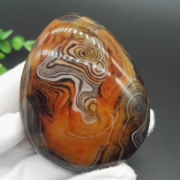
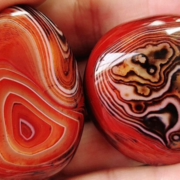
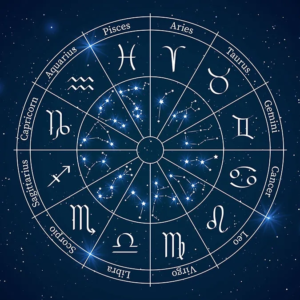
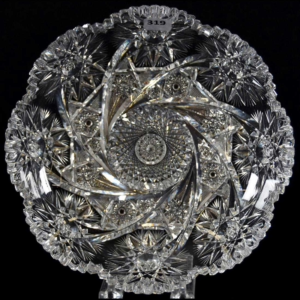
Leave a Reply
Want to join the discussion?Feel free to contribute!